The Importance of Documentation and Reflection in Building Community
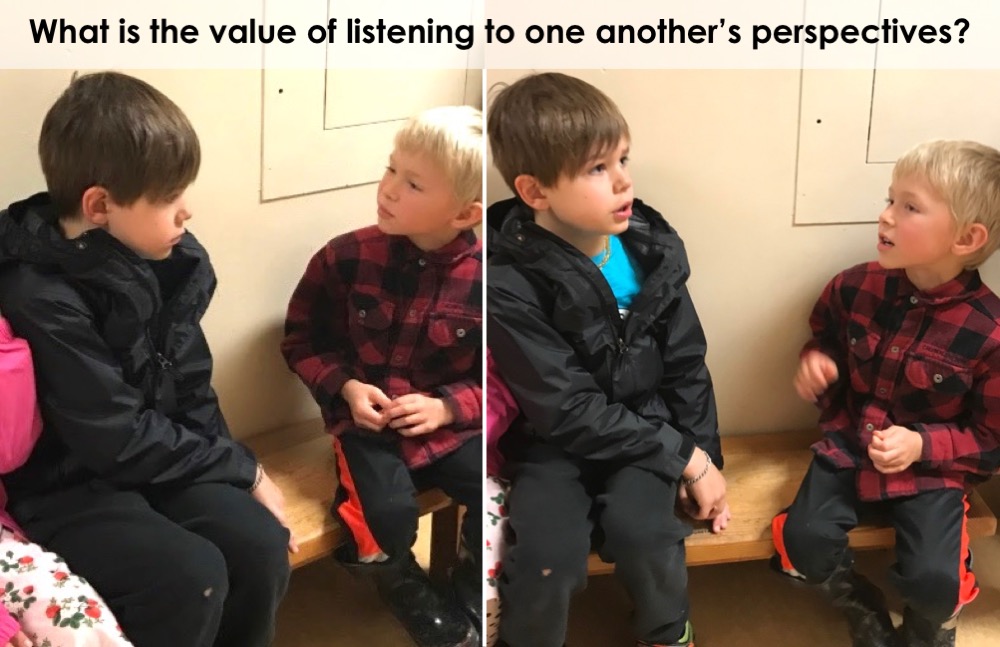
In the Cottonwood community, one of our main focuses in the beginning of the school year is community building – which is foundational to all of our other curricular work. With each new group of children, we try to make visible to them our complex process of becoming a “we”. As teachers, we know that becoming a community together can feel exciting, but can also have bumps. Children will try to make connections with one another. Many attempts seamlessly work; other efforts to reach out need adult support to feel like collaboration. To normalize the risks, successes, approximations, and oopsies of this intricate social process, and to learn about what support can look like and feel like, I make time to listen for and document the children’s initial attempts at building relationships with one another.
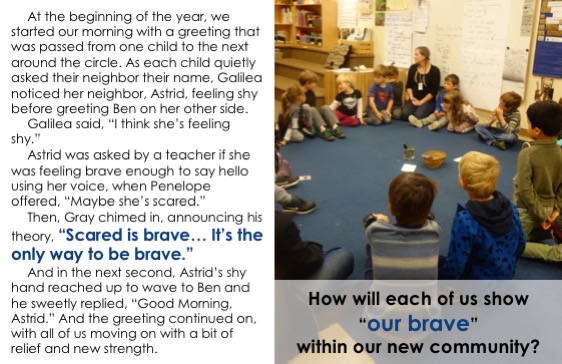
I have found that children seem to most concretely feel their group building trust together when the risks and courageous efforts of collaboration, joy, and problem-solving are highlighted visibly and shared back with them. Because of this, Sarah and I began putting documentation of these captured moments up on the walls in the Cottonwood room. Stories where children are listening to one another and taking a risk at making a connection in the face of uncertain outcomes.
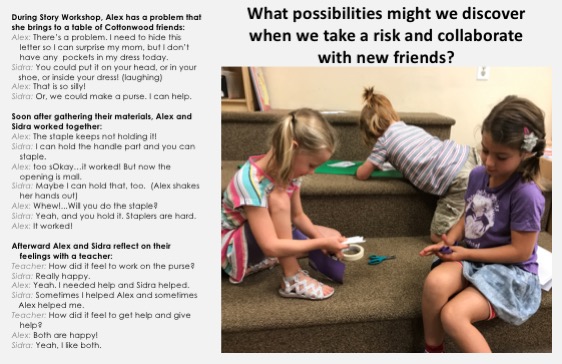
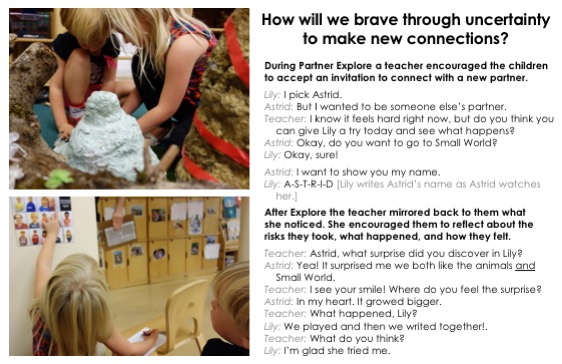
I try to make ample space and time each day for children and teachers to notice, listen, and contemplate; to be present in moments of celebration, repair, and collaboration. It is my job to bring that back to the group, to make those moments public to the whole community. While this can feel incredibly vulnerable for some, in my practice, it has become an essential tool in helping the children and I recognize the myriad of roles that we play, the strategies used that support the whole, and the role do-overs have in a classroom culture that values approximations in all areas of learning. We revisit these pieces of documentation both as participants in the stories, but also as a person from the outside of that experience, who can learn from another.
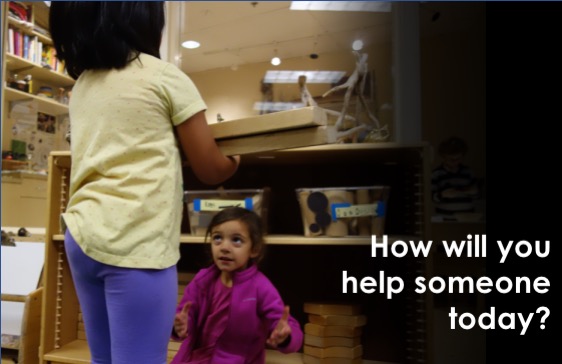
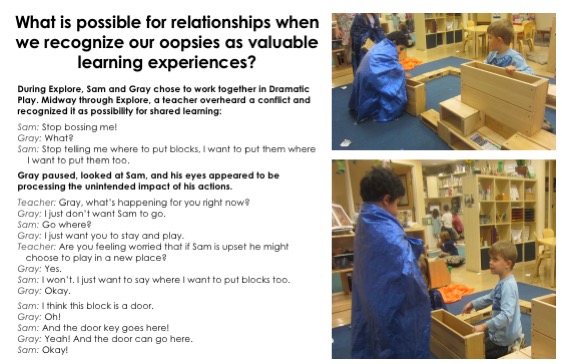
These small moments along with others serve as building blocks, supporting our efforts to create a community culture grounded in listening and support. By continually striving to hear each other, knowing that time and space is held for you to also be heard by others, we know that we will gradually become more comfortable in the place we are each in, to be scared yet brave, and begin to see ourselves as the change-makers of our community and eventually that the world needs.
As one child shared about needing inspiration to write, “[You could] find a picture of you or your friends in the classroom, so you can remember their idea and it might inspire you to find a new idea.”
I’ve been considering…
What might the implications be of reflecting on the process of building community together? And how might those implications support this group of children to see themselves as change-makers? …in their own community? …in the greater world?

Dear Lauren,
Your post is such an inspiration! I have been mulling over Parker Palmer’s “Thirteen Ways of Looking at Community” for the last month or so. At first it made me uncomfortable, than curious, than excited, than scared, than hopeful – now I am holding all these emotions together and trying to put them in action.
With all the crazy stories that our news is filled with, your beautiful illustration of the thoughtful and intentional work Opal teachers do in class every day is a ray of sunshine. You seem to cover all the points Palmer makes as essential for community. You take community as a “gift to be received” and nurture in children a “capacity for connectedness”. You use reflection (contemplation) to move through bumps, conflict, and moments of joy – which are all parts of being in a community. You help children dare to slow down and connect not just with the children they immediately find things in common with but with all the children that constitute community. You create a safe space where children “can collaborate in dreaming, playing, thinking wild thoughts and taking risks”. You make the time to listen and reflect back to the children their courage, their bumps and their successes. You pause to make room for their voices. You help children see themselves as writers, makers, inventors, change-makers, community-builders, helpers etc. You see children as resourceful and make them see it as well.
You take risks and dare to be vulnerable to achieve all the things above, and in doing so you open hearts and teach children that vulnerability is key to a stronger, wiser community and to learning in general.
I cannot help but wonder what our world would look like if we all had years of practicing what being in a community should look like the way children at Opal do? I wonder how could we, Opal parents and members of the Opal community find the time, space and courage to connect with each other in a way that would include many of the ways above? I wonder what our parenting would look like if we could manage to internalize all these aspects of community and hold the images you hold of children, stronger in our hearts and minds?
This turned into a long comment…think of is a thank you to all of you, Opal teachers, way ahead of Teacher Appreciation Week!
Thank you for this lovely post! You capture the power and potential of the small moments so articulately. I see you being scared and brave too, which contributes so much to the children being able to be scared and brave too.